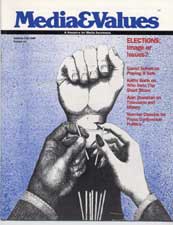Press Conferences: Linking People With Their President
|
This article originally appeared in Issue# 44
|
Noted author Norman Cousins reflects on the potential of the presidential press conference.
The recent spate of books on the Reagan presidency, in the words of a former White House occupant, has made one thing perfectly clear: Modern politicians excel in using media to display their programs and sell their ideologies. Unfortunately, the media's misuse as a public relations tool represents a major flaw in our informational system. In fact, if I were going to presume to offer the president advice it would be this: Never forget that the president's most important role is to educate the American people about their needs and how best to meet them.
Surely no politician in the world has as much access to the media as the President of the United States. No other office holder is under as much scrutiny. Despite – or perhaps because of – this glare of publicity, some modern presidents have learned to use the media spotlight to conceal rather than reveal. The metamorphosis of the press conference into a public relations event is a perfect example.
The presidential press conference has the potential to be a master classroom for educating the American people. At the very least it should be an honest forum for presenting news developments and presidential policies. Instead, it has become a pitfall for press aides and media specialists, to be avoided if possible on the principle that open communication holds too many risks. When media criticism, public comment or the flow of events make a press conference expedient, the president's staff seems determined to turn it into a favorable media event.
The presidential press conference has the potential to be a master classroom for educating the American people.
Because they are so carefully managed, press conferences drastically limit genuine two-way flow of information. Who may attend them, which reporters are called upon to ask questions, and what is discussed are all very carefully scripted beforehand. In order to make them a real source of news and ideas, the whole concept of the press conference needs to be rethought. It could provide a magnificent opportunity for speaking and listening by the president, the press, and, through them, the people.
In order to maximize this opportunity, times for holding press conferences should be regularly established. They should always be televised during prime-time hours. Rules for questioning should be liberalized and a real effort should be made to include reporters from a wide variety of publications.
Participation of ordinary citizens could broaden the process even further. During each session, individuals from various regions and groups would have an opportunity to discuss the issues that they're concerned about. Representatives from such groups as the Association of College Newspaper Editors, the Scholastic Press Association (high school editors), and the League of Women Voters could meet with the president either in person or through telephone hookups. Such sessions could be a crucial first step toward education of the public. In a nation as large and complex as ours, no effort should be spared to link citizens with their primary public servant. The finest teachers are skilled communicators.
Proper communication is one of the most difficult undertakings on earth. The older I get, the more I am forced to recognize that many or even most failures and breakdowns have their origin in faulty communication. Whether we are talking about the predicaments of human beings or the confrontations of nations, the inability of people to convey intentions and meaning has been one of the prime causes of confusion and violence over the centuries.



